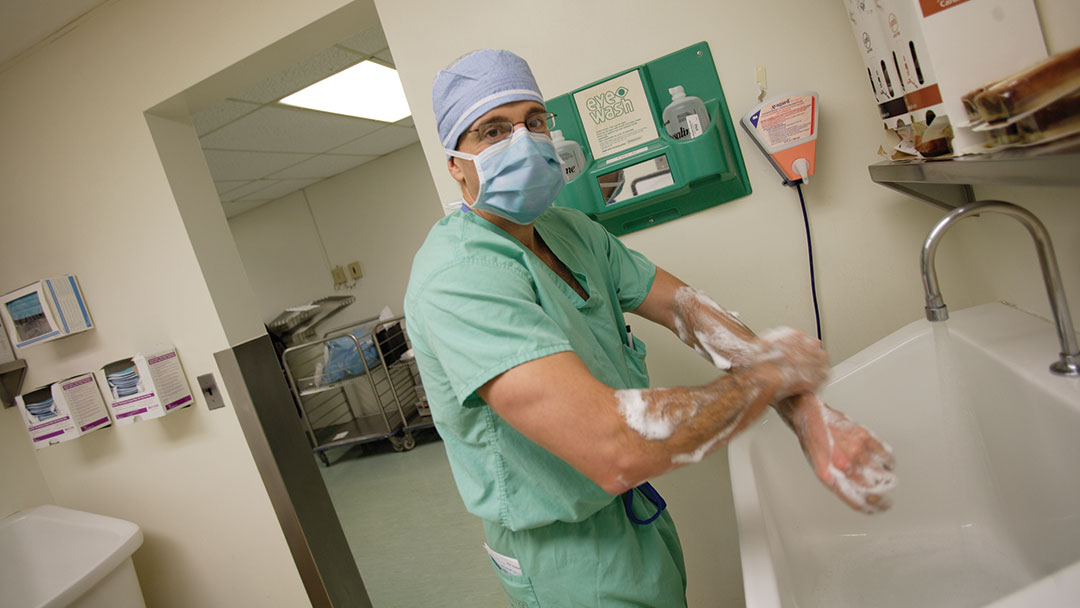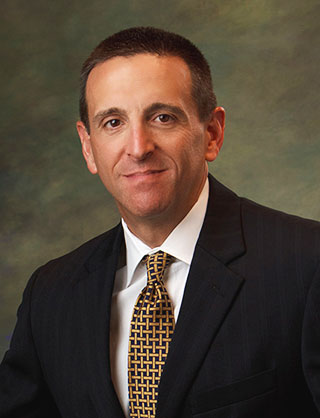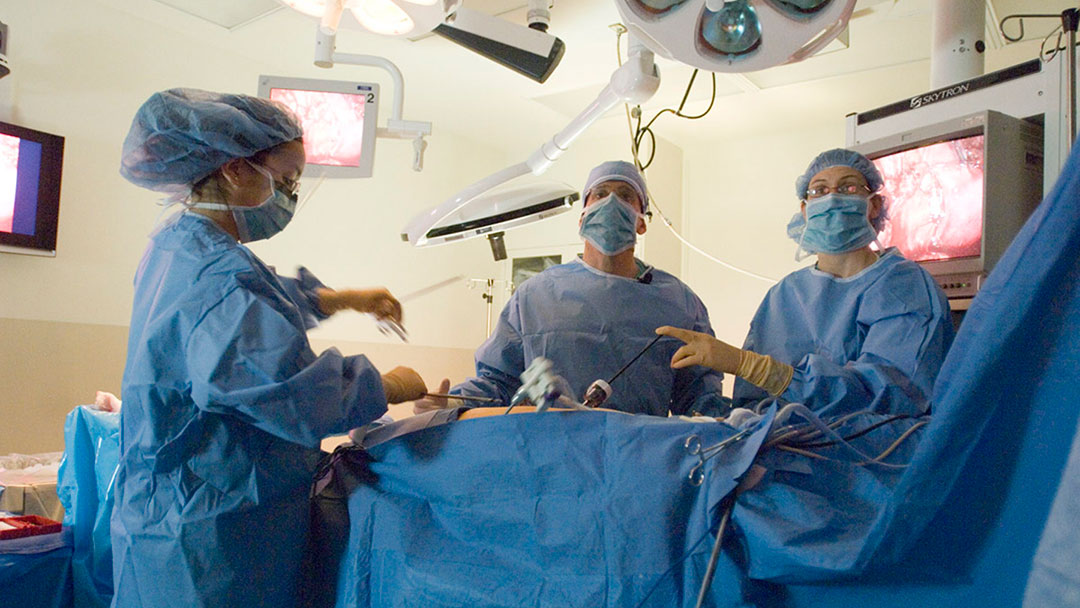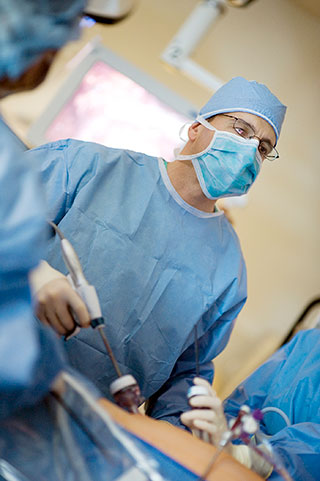

Stuart Geffner, M.D., of Saint Barnabas Medical Center, scrubbing in for surgery. Photos courtesy of Saint Barnabas Medical Center
Improvement
Educating the next generation
How Stuart Geffner, M.D., of Saint Barnabas Medical Center shows teens the importance of organ donation and transplantation.

Stuart Geffner, M.D.
The first kidney transplant was the result of a living donor — 65 years ago.
Since the Organ Procurement and Transplantation Network began tracking national transplant data in 1988, surgeons have performed more than half a million kidney transplants in the U.S. About a third of the surgeries are due to living donors sharing the gift of life with a matched candidate (some, a result of kidney paired donation.)
But with more than 94,000 people currently waiting for a kidney transplant in the U.S., the need for kidneys far outstrips the available supply — and will for the foreseeable future.
So how does the next generation learn about the importance of organ donation, and how do they become inspired to get involved in the future of organ transplantation?
One surgeon thinks giving teens the opportunity to view a living donor kidney transplant surgery can help.
“Live From Surgery”
About a dozen times a year, high school science students from across New Jersey join to witness — in real time — Stuart Geffner, M.D., of Saint Barnabas Medical Center (a RWJBarnabas Health hospital) remove a kidney from a living donor before implanting it into a recipient. The rapt students watch and listen as the surgery unfolds on the theater screen in the Liberty Science Center in Jersey City, New Jersey.
“It is a spectacular program for the kids, the Science Center, my team and the NJ Organ and Tissue Sharing Network,” Geffner said. “What makes it so special is that it’s live and interactive. The kids see what I see with the same laparoscopic camera view that I do. They have microphones and can ask questions, and I have an earpiece and can answer them.”

“The kids see what I see with the same laparoscopic camera view that I do. They have microphones and can ask questions, and I have an earpiece and can answer them.” Photos courtesy of Saint Barnabas Medical Center
Geffner is chairman and surgeon-in-chief of the Saint Barnabas Medical Center Department of Surgery. He also directs renal and pancreas transplant surgery at the hospital. He has performed more than 2,000 kidney and pancreas transplants over the course of his career, in addition to more than 1,000 living donor kidney surgeries.
The “Live From Surgery” experiences he shares with the students always feel particularly transformative, he said, as the events help prepare the next generation to be organ donors and transplant professionals.
“I’ve had a very productive career in transplantation,” Geffner said. “I feel blessed to have brought a lot of innovative things to my hospital in New Jersey, but this is the thing that I am singularly most proud of and enjoy the most. It’s really because of the kids.”
A sight to see
Geffner estimates the program has reached over 20,000 high school-aged students, some of whom participated internationally through campus programs in Europe and Asia. “Every once in a while we get middle school students, who are completely uninhibited and ask whatever comes to their mind, which is great,” he said.
During the two hour surgery students see the laparoscopic dissection of the kidney followed by the physical extraction of the organ from the donor. They see the kidney change color as it is flushed on the back table, followed by additional dissection and clean up. They then watch Geffner walk next door into the organ recipient’s room, where a medical colleague has prepared the recipient for surgery. “They see the arterial and venous anastomosis as well as the reperfusion of the kidney and some urine being made — and by then it’s almost exactly two hours,” Geffner said.
Geffner has performed over 200 of these surgeries and has only had one patient refuse their consent in 15 years. “Most people are convinced right from the get-go,” he said. ”They see it as a great opportunity to participate in an educational experience.”
An enduring message
Following the surgery Geffner talks with the students about organ donation and explains how long the waiting list it. “One of the important take home messages for them is that we have far more people waiting than we have available organs,” Geffner said. “They need to understand the tremendous shortage of organs in this country and think about it as they become adults.” Geffner also encourages the students to talk with their families about their organ donation wishes. “They should also know what their family’s wishes are in case something happens,” he said.
After the talk, he takes questions from the students. The question he gets all the time? What he thinks the future will bring to transplantation.
He jokingly says he was pretty convinced as a young transplant surgeon that at some point he would have a pig farm behind Saint Barnabas with genetically engineered pigs that could supply organs.
“Clearly that is not going to happen in my career,” he said. “So I tell the kids that living donor kidney transplantation is the state-of-the–art surgery in the field of transplantation and for the treatment of renal failure.”
His biggest regret of the program is the inability to track data regarding the impact on the kids.
“I’ve always wanted to know if the kids who are exposed to the program consent to organ donation at a higher rate,” Geffner said, but because he has scrubbed in with young residents who told him they saw one of his live surgeries in high school, he knows he is impacting the future in some way.

